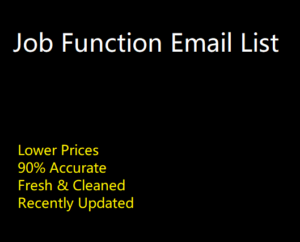When crafting a job description, the essential functions play a pivotal role in defining the core responsibilities of the role and outlining the key tasks an employee is expected to perform. These functions serve as the foundation for hiring, performance evaluation, and employee development. By clearly outlining the essential functions, employers can attract suitable candidates, ensure that all employees understand their roles, and foster a cohesive and productive work environment.
1. Defining Essential Functions:
Essential functions refer to the fundamental duties and tasks that are inherent to a specific job. They are the primary reasons the role exists and are crucial for achieving the organization’s goals. These functions are typically outlin in job Business Opportunity Seekers Email List descriptions to provide potential candidates and current employees with a clear understanding of the job’s requirements. They also serve as a basis for compliance with labor laws, particularly in cases where accommodations may be required for individuals with disabilities.
2. Establishing Role Clarity:
Well-defined essential functions set the stage for role clarity. Candidates and employees need to know precisely what is expect of them to excel in their positions. By clearly outlining the key responsibilities, employers minimize confusion and ambiguity, helping employees focus on delivering results.
3. Attracting the Right Candidates:
A carefully crafted job description with well-defined essential functions acts as a magnet for the right candidates. When candidates can easily assess B2C Fax their fit for the role based on the outlined functions. They are more likely to self-select, leading to a more efficient and targeted recruitment process. This results in a higher likelihood of attracting individuals who possess the necessary skills, experience, and motivation to excel in the position.

